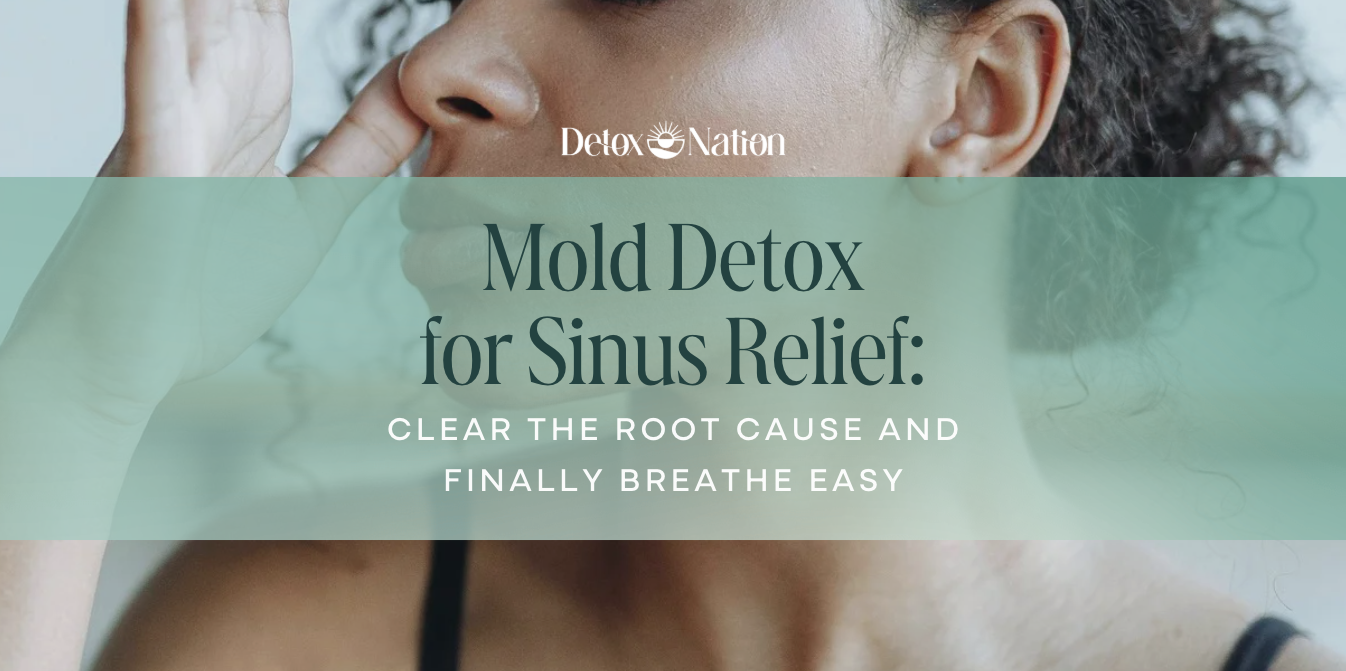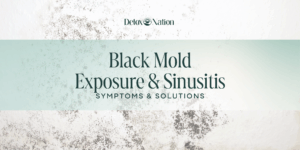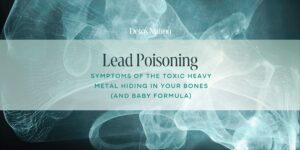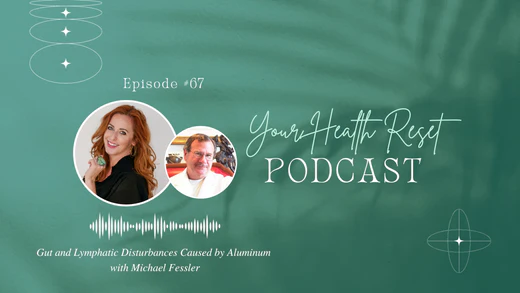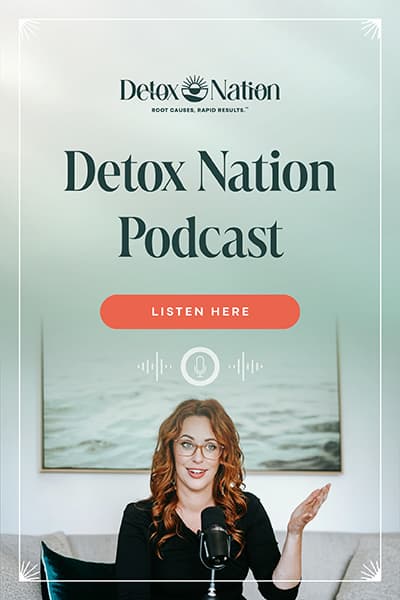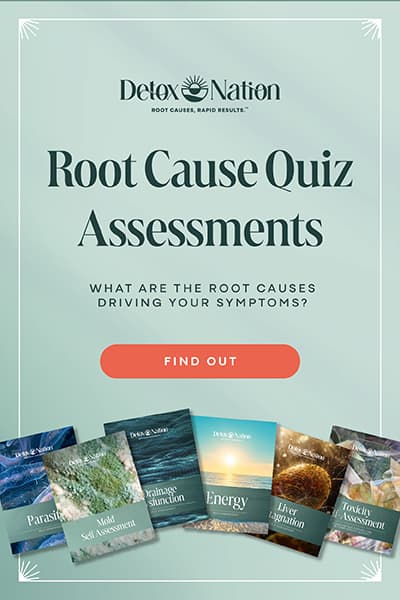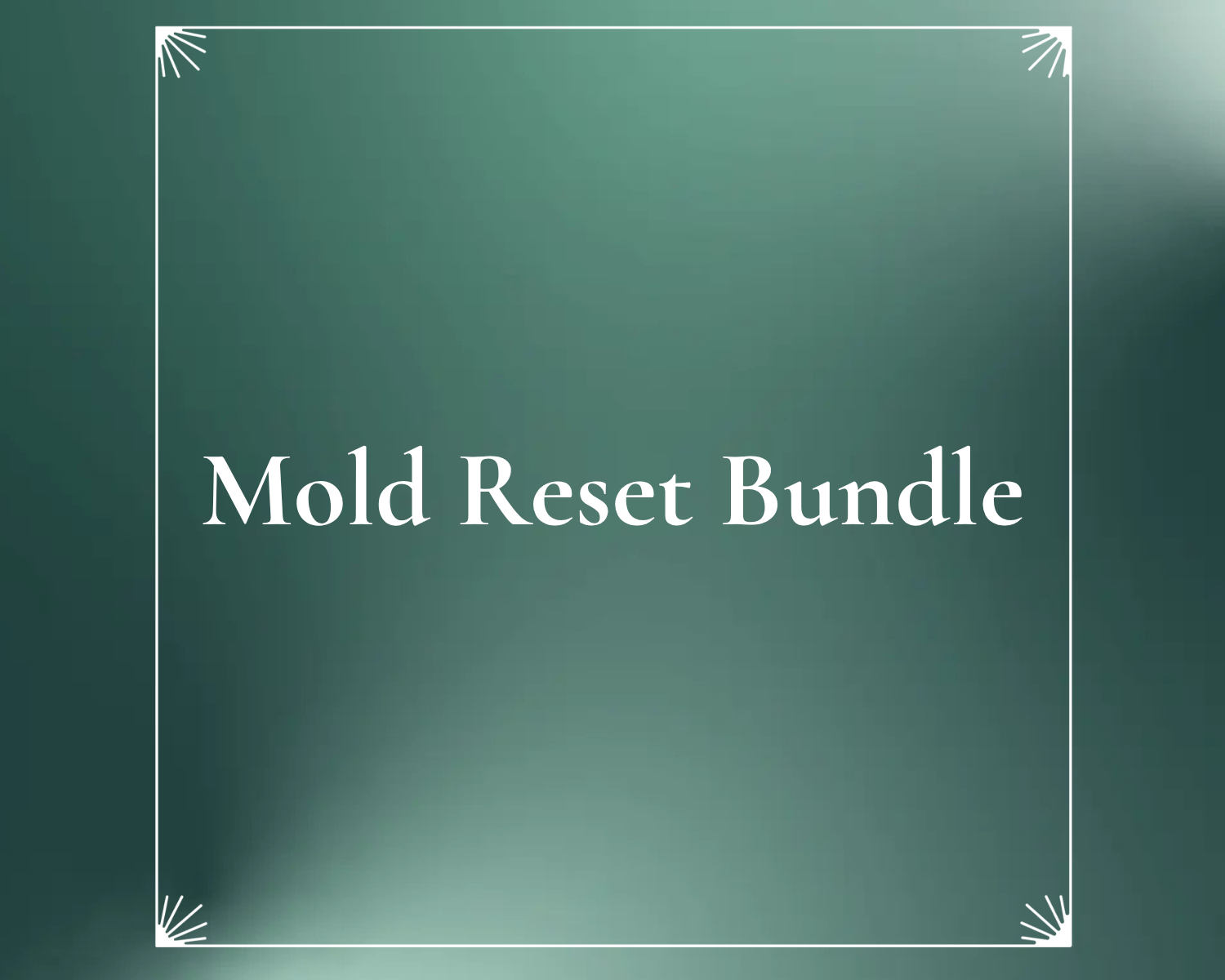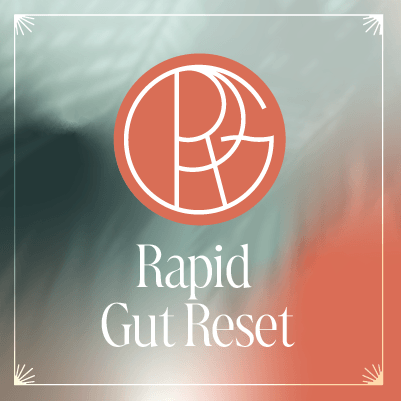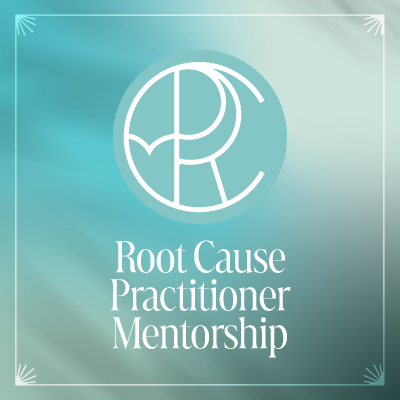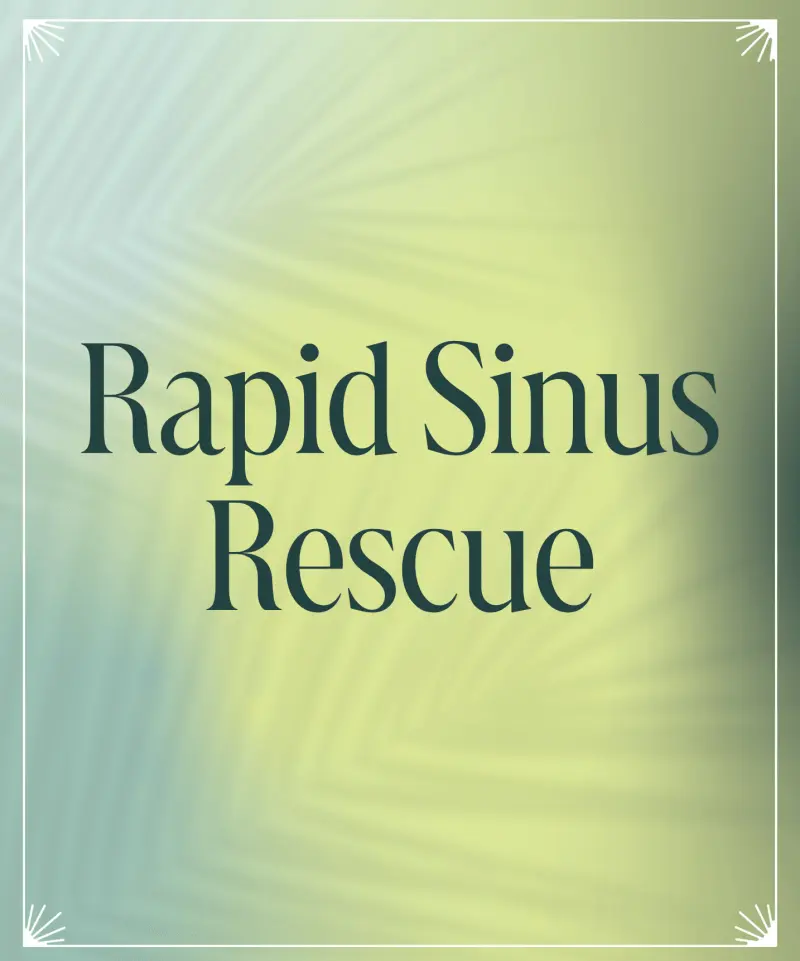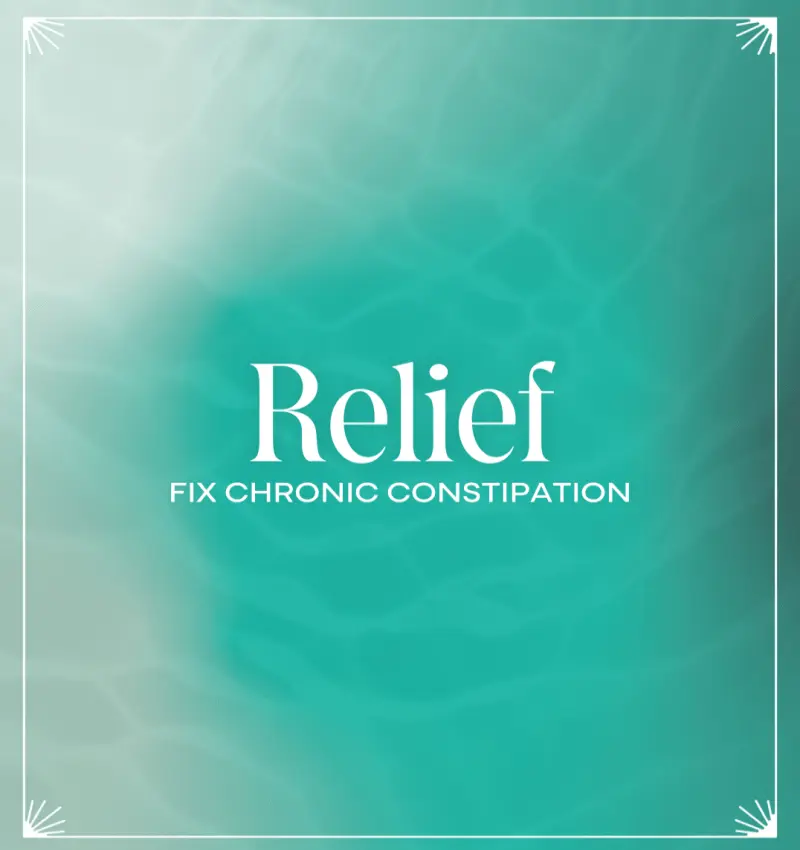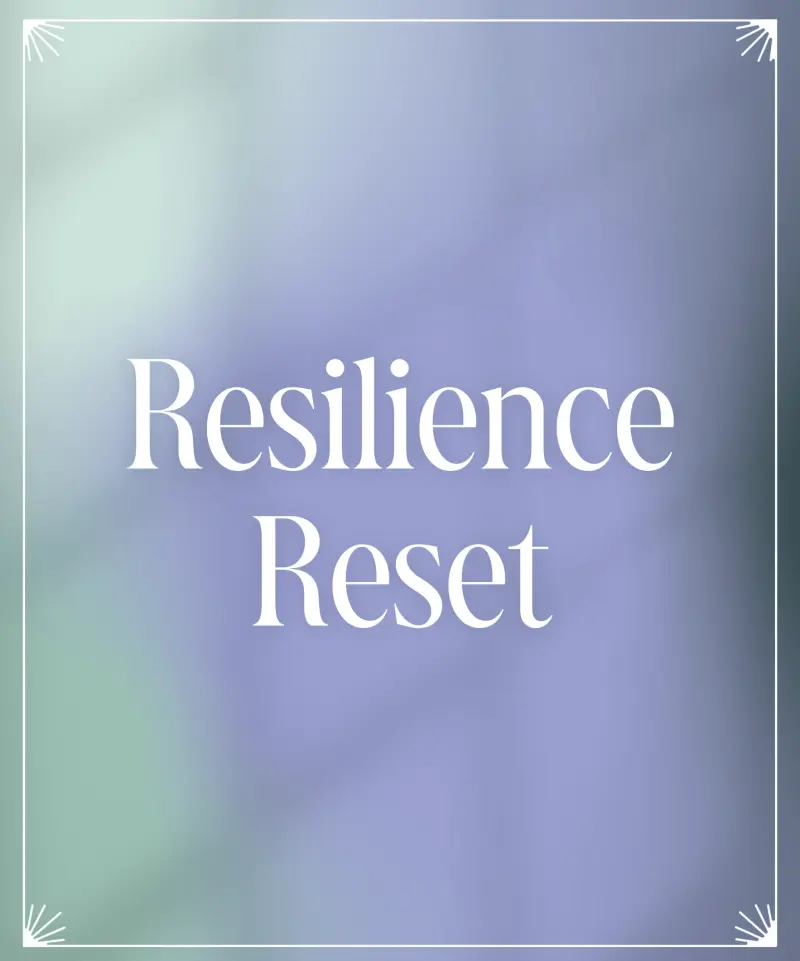You started with a little congestion.
No big deal, right?
A few sniffles in the morning. Maybe some post-nasal drip that wouldn’t quit.
You chalked it up to allergies, or the weather, or maybe your dusty AC filter.
But then it kept going. And going.
And suddenly you’re living on antihistamines and praying your next sinus infection doesn’t hit during a work presentation or a first date.
Let me guess: You’ve tried saline rinses, antibiotics, allergy meds, decongestants, even cutting out dairy.
Maybe someone handed you a steroid nasal spray like it was magic.
And still, your head feels underwater and your brain runs on dial-up.
This could be mold—not the kind on shower tiles, but invisible spores and mycotoxins hiding in walls, circulating through vents, and taking up residence in your sinuses.
This article is for you if:
- You’ve had sinus issues longer than you’ve had your current mattress
- Antibiotics help temporarily, but the symptoms always come back
- You’re tired of managing symptoms and want real resolution
We’re going to discuss why mold could be the root cause of your stubborn sinus issues and how a proper mold detox can bring lasting relief.
Key Takeaways
- Your sinuses are part of a bigger story.
- Persistent sinus symptoms might be due to mold and mycotoxins.
- Detoxing your body—and your environment—can finally bring relief.
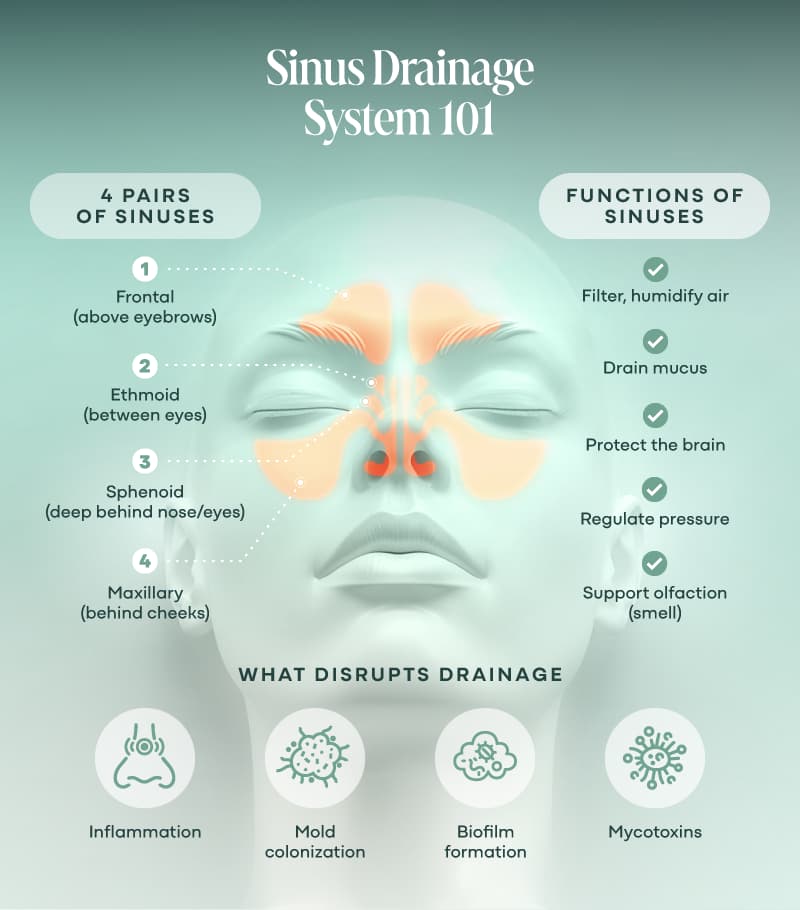
Sinuses 101: What They Are and Why You Should Care
Let’s get friendly with your sinuses for a second because understanding how these little air pockets work gives you the power to fix what’s going wrong.
You’ve got four pairs of paranasal sinuses (12, 13):
- Frontal (above your eyebrows)
- Ethmoid (smallest; between your eyes)
- Maxillary (largest; behind your cheeks)
- Sphenoid (deep behind your nose and eyes)
These hollow spaces are lined with mucous membranes and cilia—tiny, hair-like sweepers whose job is to move mucus out and keep things flowing (12).
Think of your sinuses as internal car washes: they filter the air, humidify it, trap junk, and then drain the waste away through tiny openings (12, 13).
They also (13):
- Equalize pressure differences during breathing,
- Protect the brain from injury (during a trauma, any bone fragments would enter the sinuses before penetrating the brain).
- Provide a layer of thermal insulation.
- Act as a buffer to protect the inner ear.
- Protect the body from pathogens.
- And lighten the weight of the skull.
When they’re clear and flowing? You breathe easily, your head feels light, and your voice doesn’t sound like you live in a tunnel.
But when things back up (because of inflammation, mucus overproduction, or, yes, colonizing mold) your sinuses become little pockets of misery.
Instead of drainage, you get congestion.
Instead of air flow, you get pressure.
And instead of restful sleep, you’re mouth-breathing like a half-asleep pug at 2 a.m.
Here’s the kicker: Your sinuses are supposed to be self-cleaning.
When they’re not, your body’s waving a big, mucusy flag that something’s disrupting your natural flow.
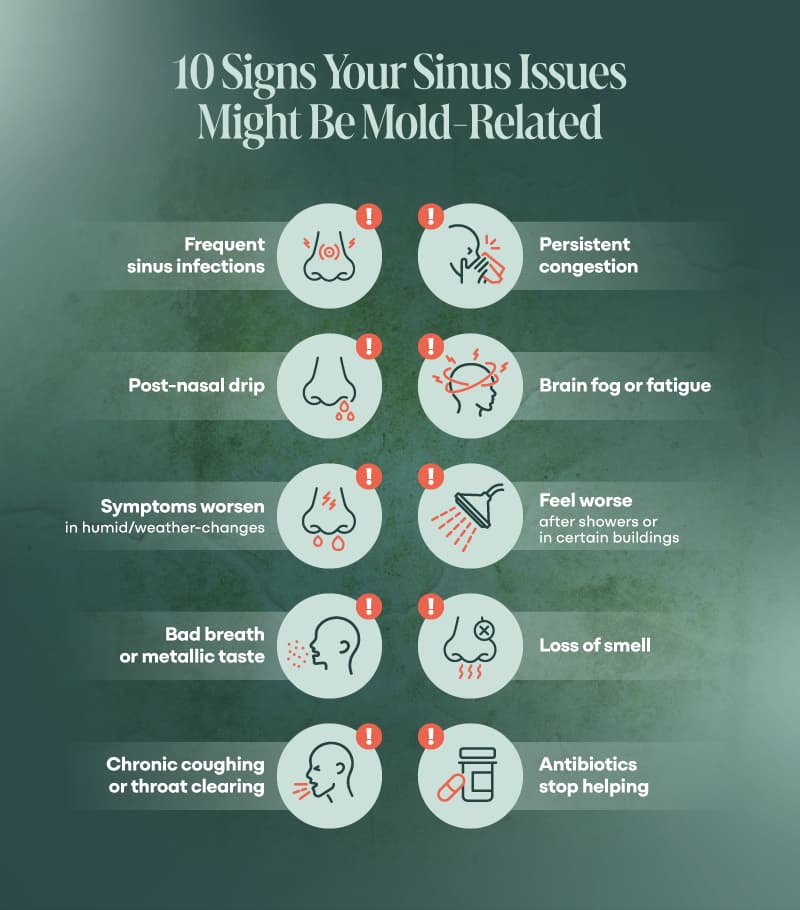
When Sinuses Get Stubborn: Signs & Symptoms of Chronic Sinus Issues
At first, it probably felt like a cold that wouldn’t go away.
But now? You’ve had more sinus infections than birthdays in the last five years. This is called Chronic Rhinosinusitis (4, 11, 12, 16, 17), and it can be caused by mold (1, 7, 13, 15, 17, 18, 20).
Or maybe your sinuses never fully “clear,” even on your best days, you’ve just gotten used to living with the pressure, the drip, and the low-grade misery. (Yay for adapting, but maybe also no.)
Here are some of the most common signs that your sinus issues have outgrown “normal”:
- Facial pressure or pain—usually around the eyes, forehead, or cheeks (2, 5, 10, 14, 19)
- Post-nasal drip—that annoying tickle in the back of your throat that never quite leaves (2, 5, 10, 19)
- Congestion that never clears—even when nothing’s actively “wrong” (2, 5, 10, 19)
- Mouth breathing at night—because your nose gave up mid-shift (10)
- Recurring infections—the kind that need antibiotics every few months
- Bad breath or funky taste in your mouth
- Chronic coughing or throat clearing—especially worse in the morning (10)
- Brain fog or fatigue—because inflammation affects your whole system (10)
- Loss of smell—this can be partial or total (5, 10, 19)
And if you’ve ever felt like your “sinus infection” somehow came with mood swings, anxiety, or insomnia you’re not imagining things.
Chronic inflammation, especially the kind linked to hidden infections, can throw your whole nervous system out of balance.
If you’ve had these symptoms more days than not for months (or years) it’s not just “allergies” anymore.
Something deeper is disrupting your body’s ability to regulate inflammation and drain properly.
The real question becomes: What’s stopping your sinuses from doing their job?
And this is where we start to look beyond pollen and pet dander and start asking if mold and mycotoxins have set up camp in your internal terrain.
We Can Help
You’re not doomed to live on decongestants and false hope forever. Start with the Mold Toxicity Quiz to begin connecting your symptoms to what might be lurking in your environment.
Take the QuizMold & Mycotoxins: The Sinus Connection Nobody Talks About
Mold is not always visible. It’s not always black. And it’s not something you can just bleach and forget.
Mold is a living organism.
Fungi, to be exact.
And it thrives anywhere there’s warmth, moisture, and a food source, which, unfortunately, includes drywall, HVAC systems, carpeting, ceiling tiles, and yep, your sinuses.
But mold isn’t even the worst part.
The real chaos comes from the mycotoxins it produces.
These are the toxic chemical byproducts mold releases to defend its territory and suppress your immune response.
Think of mycotoxins as mold’s version of chemical warfare: invisible, toxic, and highly effective at confusing your body’s defenses.

Guess what? Your sinuses are prime real estate for mold.
Why? Because your sinuses are:
- Warm
- Moist
- Dark and hard to access
When mold spores are inhaled, especially repeatedly, they can stick to your sinus tissues and form biofilms (1).
A biofilm is like an invisibility cloak: it hides mold and bacteria from your immune system, which means they can linger and cause chronic, low-grade inflammation.
If you’ve been treating your symptoms with antibiotics for years, but never addressing potential mold or fungal colonization, it’s no wonder things aren’t getting better.
In fact, those antibiotics may make things worse, wiping out helpful bacteria while mold and fungi keep thriving.
You’re not doomed, though; you’ve found the right rabbit hole. Now, we can explore how to climb back out by working with your body, not against it.
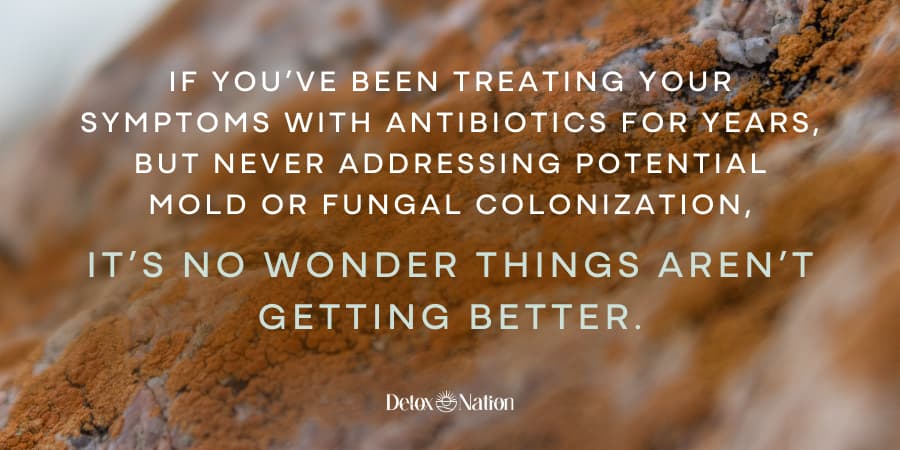
Symptoms as Clues
Radical thought: Your sinus symptoms are clues, not the problem. All that pressure, congestion, fatigue, and brain fog is your body is saying, “Something’s not right here. Can you help me?”
Instead of listening, most of us were taught to suppress it, suck it up, and if it keeps coming back, maybe we’re broken. Not true. Not helpful.
Your body is trying to communicate with you.
Symptoms are signals from your internal terrain, trying to get your attention. When it has been whispering for years but you couldn’t hear it over daily life, it starts shouting.
That never-ending sinus congestion? Might be your immune system alerting you to mold exposure.
The post-nasal drip that gets worse at night? Could be drainage dysfunction from toxin overload.
That foggy feeling you can’t shake? Might be mycotoxins disrupting mitochondrial function and nervous system flow (25, 26).
None of this is your fault, but it is your responsibility to fix it.
Not because you messed something up, but because you’re the only one who can choose to start asking deeper questions.
And now that you are?
You’re already shifting out of survival mode and into healing mode.
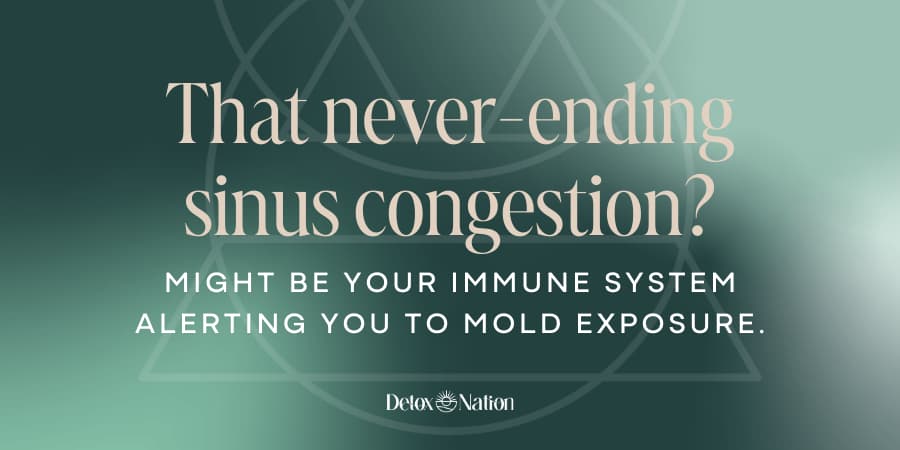
How to Know If Mold Is Your Root Cause
Let’s be honest, when you’ve had chronic symptoms for a while, everything starts to blur together.
Was it the gluten? The stress? The antibiotics from 2014?
Or maybe you’re just too sensitive (if one more person says that…).
If mold is a major player in your health story, your sinuses are rarely the only system raising the alarm.
So how do you know if mold is your root issue?
Testing is useful, but here’s the truth: If your symptoms point to mold, and you’ve lived or worked in a moldy space, you don’t need a lab to start making changes.
Let’s look beyond congestion and get real with a few key clues:
Mold Might Be Behind Your Sinus Symptoms If You Also…
- Feel noticeably worse after showers, during rainy weather, or in humid buildings
- Have random waves of anxiety or irritability you can’t explain
- Wake up congested, even with clean sheets and an air purifier
- Crash hard after being in a “musty” space (like grandma’s basement or your office)
- Experience brain fog, dizziness, or fatigue that hits like a wall
- Struggle with bloating or food sensitivities that didn’t used to be there
- React strongly to fragrances, smoke, or cleaning chemicals
- Get chronic sinus infections that don’t respond well to antibiotics
- Have a history of water-damaged housing, work, storage or transportation (even from years ago)
If you’re nodding along to more than a couple of these, it’s time to address mold.
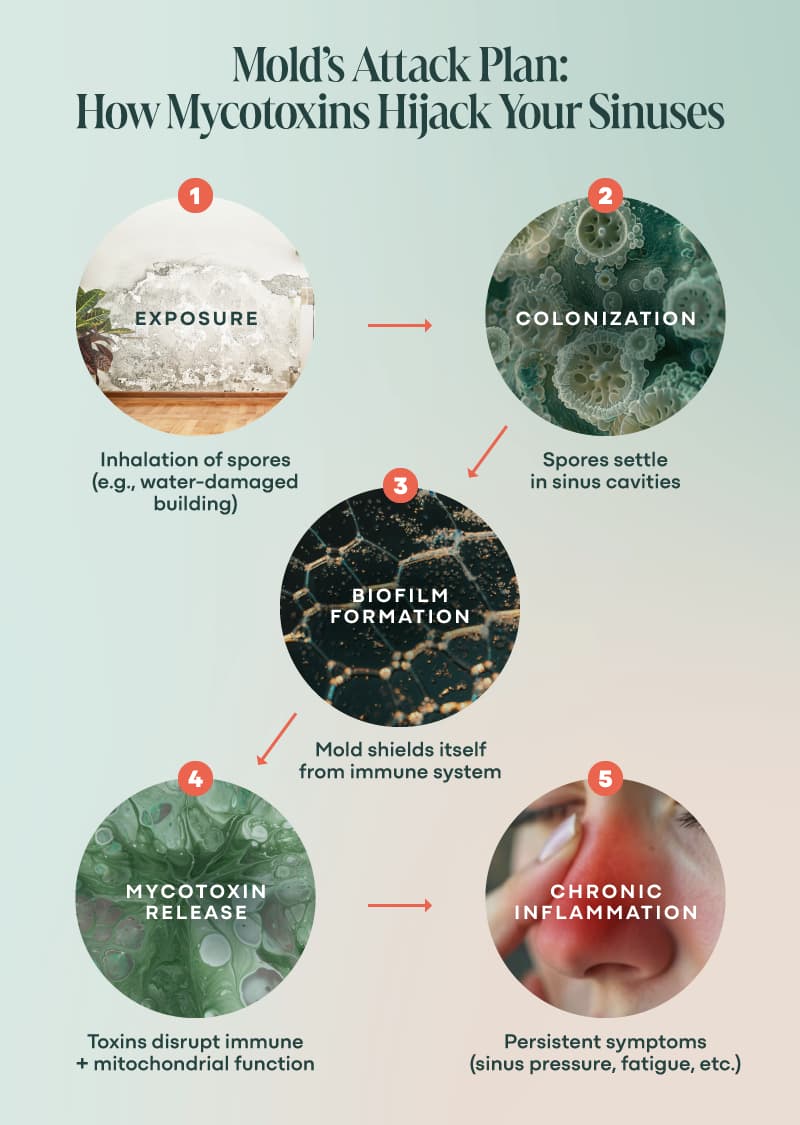
Root Cause Resolution: How Mold Detox Can Help Your Sinuses
If your sinuses have been a war zone for years, it’s not because your body is weak.
It’s because something hasn’t been addressed at the root, and more than likely, it’s mold colonization.
Here’s how it works:
- You’re exposed. Maybe it was an old apartment, a moldy workplace, or a water-damaged rental that “smelled a little musty.” You didn’t notice it at first until your symptoms quietly stacked up.
- The mold settles in. You inhale the spores. They find a cozy home in your sinus cavities (1). And because they’re wrapped in a biofilm (their version of invisibility armor), your immune system doesn’t mount a full response, it just stays on high alert (1).
- Your body becomes overwhelmed. Mycotoxins released by mold disrupt your mitochondria, clog your lymph, irritate your nervous system, and inflame your tissues (24, 25) . Over time, your drainage slows down, your immune system misfires (27, 28), and your sinuses become the scene of a never-ending crime.
Even if you remove the initial exposure source, you’re carrying the mold with you everywhere you take your sinuses.
And the mold continues to poison you with mycotoxins (1).
If you’ve been focused on managing inflammation with sprays or meds, but you haven’t addressed mold at the root, you’re basically mopping the floor while the faucet is still running.
Mold detox is how we turn off the faucet.
You don’t want to go “hardcore” with antifungals or do some trendy cleanse.
That usually backfires and makes you feel worse (hello Herxheimer reaction, goodbye productivity).
Real detox is about supporting your terrain so your body can do what it’s already wired to do: heal.
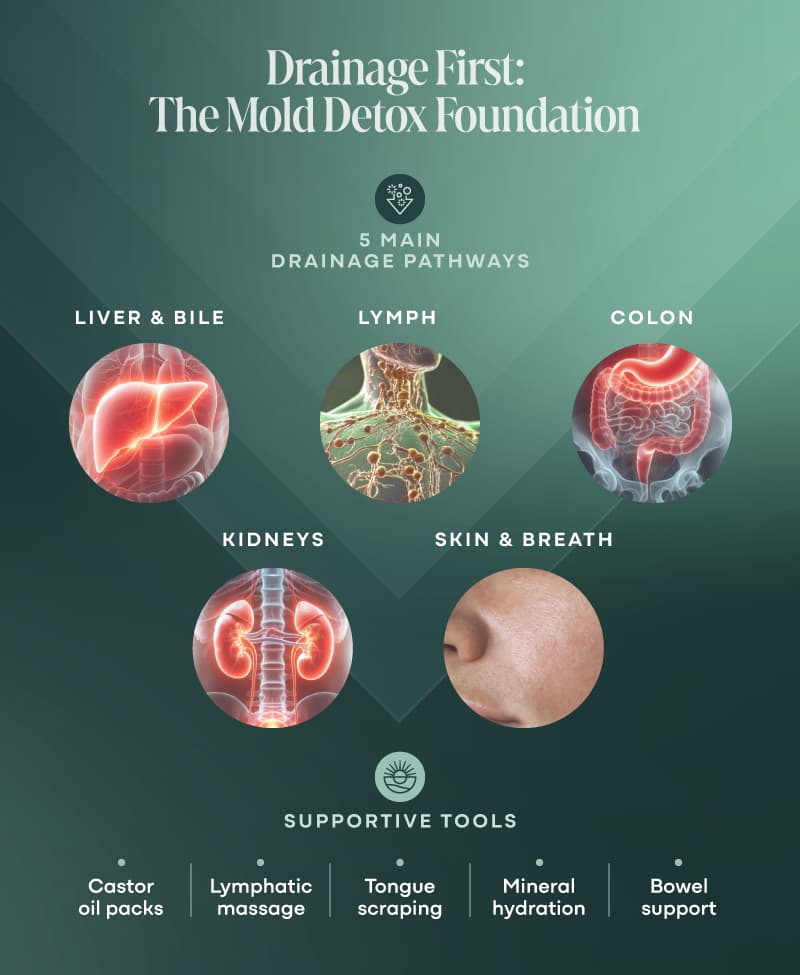
Open Up: Supporting Drainage & Detox Pathways
You can’t detox if you can’t drain.
Think of your body like a house. Detox is the deep cleaning. But if the plumbing is clogged, you’re just smearing dirt around and maybe flooding the place.
This is where most people get stuck (or worse, crash).
They jump straight to “kill the mold!” without supporting the exit routes.
And then they wonder why they feel anxious, wired-but-tired, or like they’ve been hit by a truck.
That’s not detox “working.” That’s detox without drainage.
Drainage pathways are the routes your body uses to move toxins out:
- Liver and bile flow
- Lymphatic system
- Colon and bowel movements
- Kidneys and urine
- Skin and sweat
- Lungs and breath
And yes, your sinuses are part of that system.
When drainage slows down systemically, your sinuses get congested too. It’s all connected.
Here’s what opening drainage looks like in real life:

Daily Practices That Support Drainage
- Tongue scraping – gentle lymph and toxin release via the oral cavity
- Lymphatic Self-Massage with “The Big 6” – encourages lymph movement
- Castor oil packs – support liver flow and reduce inflammation
- Gentle movement – walking, rebounding, or stretching (especially when bloated or puffy)
- Bioavailable minerals – your body needs them to open the exits
- Intentional hydration – structured fluids that move things
- Pooping daily – non-negotiable (if you’re not eliminating, you’re reabsorbing)

Nervous System Regulation
Your drainage pathways do not function in fight-or-flight mode.
If your body thinks you’re running from a bear, it’s not prioritizing detox, it’s prioritizing survival.
So, before you reach for the binder or detox protocol, ask: “Am I safe enough to heal right now?”
Breathwork, Vagus nerve toning, nature time, co-regulation with safe people—all of it matters.
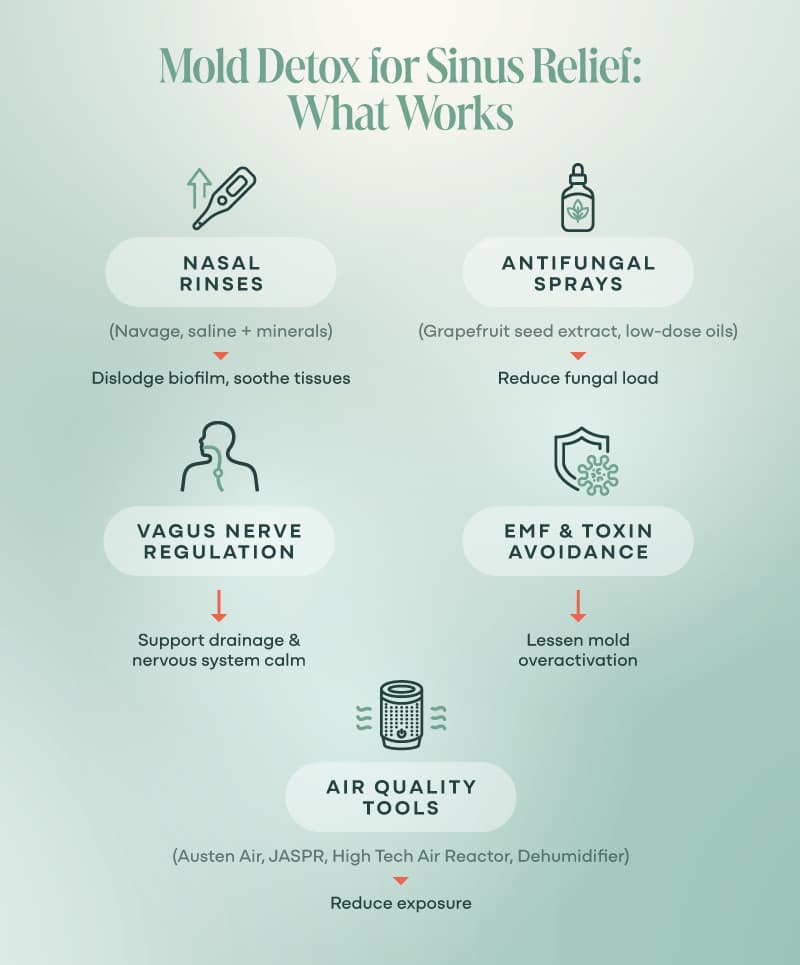
Sinus-Specific Mold Detox Tips
At this point, you might be thinking: “Cool. I get that mold is a thing. I’m on board with drainage. But how do I get this junk out of my sinuses?”
Great question.
Because if mold has colonized your sinuses, the inflammation won’t fully resolve until you evict the tenants upstairs.
Here’s how to start clearing the mold layer from your sinuses without shocking your system:
Nasal Rinses That Actually Do Something
The neti pot is fine, but water alone won’t cut it here because mold tends to cling.
Biofilm is like glue. So, you need a rinse that can gently disrupt that layer without blowing up your mucosal lining (2,10).
Options (rotate and test based on sensitivity):
- Navage – uses mild, powered suction to flush out mucus and germs
- Saline + trace minerals – soothes and hydrates tissues
- Antifungal nasal sprays (natural and evidence-based) like those made with low-dose essential oils and binders (only with expert guidance—don’t go DIYing this, your sinuses aren’t a test lab)
Always support drainage first, otherwise you might mobilize toxins without a way out (hello, sinus pressure rebound).
Mind Your Air
You cannot detox mold from your body while breathing it in every night.
Start here:
- HiTech Air Reactor in your bedroom
- HOCL or EC3 sprays to neutralize spores in the air
- Dehumidifier if your space runs humid (mold’s love language is 60%+ humidity)
- HVAC filters—upgrade to MERV 13 or higher, and change regularly
- Check your humidifiers! If it’s not cleaned with hydrogen peroxide weekly, it’s probably growing biofilm
Don’t Feed the Mold (or Invite Its Friends)
Mold rarely travels alone. It loves to party with its toxic BFFs:
- Heavy metals
- Parasites
- EMFs (radio-frequency EMFs can enhance the secretion of total proteins and the enzyme α-amylase in fungi (24) which makes me wonder if they can also cause mold to increase the production of mycotoxins)
If your sinus detox hits a wall, it could be because one of these other factors is still lighting fires in your terrain.
That’s why a whole-body approach is non-negotiable.
Is It You or Your House?
Sometimes the mold is still in your environment.
If your symptoms flare when you get home, after a shower, or when the AC kicks on, it might be time to investigate:
- The sniff test (looking for musty odors, though not all toxic molds have a smell)
- ERMI or HERTSMI testing
- Professional inspection if you suspect water damage or visible mold
And no, you don’t have to live in a swampy basement for mold to be a problem. I’ve seen brand-new condos with hidden growth behind the drywall. Don’t dismiss mold if you live in a new building.
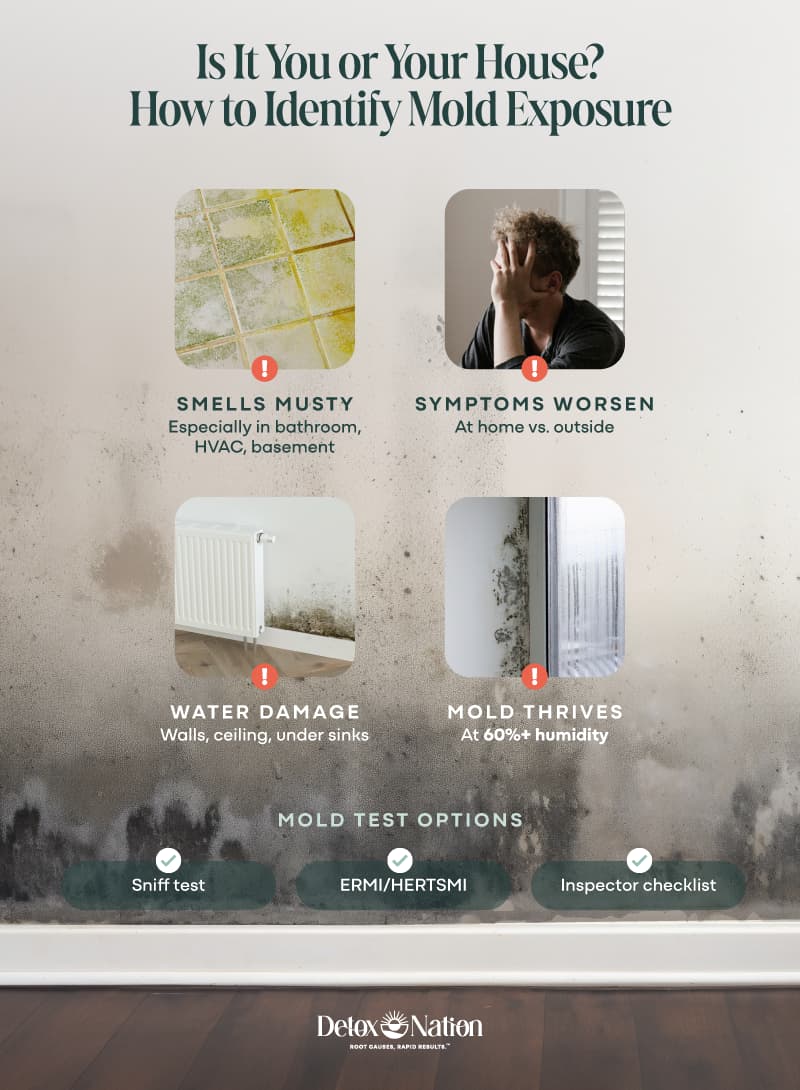
Detoxing From Mold Can Help Your Stubborn Sinus Symptoms
If you’ve been living with sinus symptoms that won’t go away.
If you’ve been dismissed, misdiagnosed, or made to feel like you’re imagining it.
If you’ve spent years patching together protocols, Googling in the middle of the night, and still waking up exhausted, you’re not alone.
Thousands of people are walking around right now with mold-triggered sinus symptoms, mislabeling them as “seasonal allergies,” “hormonal stuff,” or “just stress.”
Most of them don’t know their terrain’s been hijacked by something they can’t even see.
But you do.
Now you know what to look for. You know how to listen to your body.
The One Lab Test That Could Change Everything
The Detox Nation Mold Test + Consult is a comprehensive urine test that measures 40 different mycotoxins from 11 mold species—the most complete mold toxicity panel available—plus a 60-minute consultation with our expert team to review your results.
Get Your Mold Test + ConsultFAQs
1. Gross! Can mold really live in my sinuses?
Yes, especially if you’ve had repeated exposure. Mold spores can settle into sinus tissues, form biofilms, and trigger chronic inflammation that never quite resolves.
2. What’s the difference between mold and mycotoxins?
Mold is the organism. Mycotoxins are its chemical weapons—tiny, invisible toxins that mess with your immune system and drain your energy.
3. I’ve used nasal sprays and antibiotics for years. Why aren’t they helping?
Because they don’t address mold or biofilms. In fact, repeated antibiotics can make things worse by wiping out your protective bacteria.
4. How do I know if mold is causing my sinus problems?
If you’ve had sinus symptoms for months or years, feel worse in certain environments, or also struggle with fatigue, brain fog, or food sensitivities, it’s worth investigating.
5. Do I need expensive lab tests to know for sure?
Not necessarily. A thorough symptom history and environmental clues can be just as revealing as a lab test. Start with a free mold quiz before going full CSI.
6. I tried detoxing once and felt awful. What went wrong?
You probably skipped drainage support. Detoxing without open pathways is like trying to leave a burning building with the doors locked.
7. Can I detox from mold while still living in a moldy space?
It’s tough. You can support your body, but ongoing exposure can keep triggering symptoms. Generally, the house has to heal with you, or you leave it behind.
8. What should I do first if I suspect mold is affecting me?
Start with nervous system support and drainage tools, then layer in targeted detox protocols. Don’t jump straight to “kill mode.”

